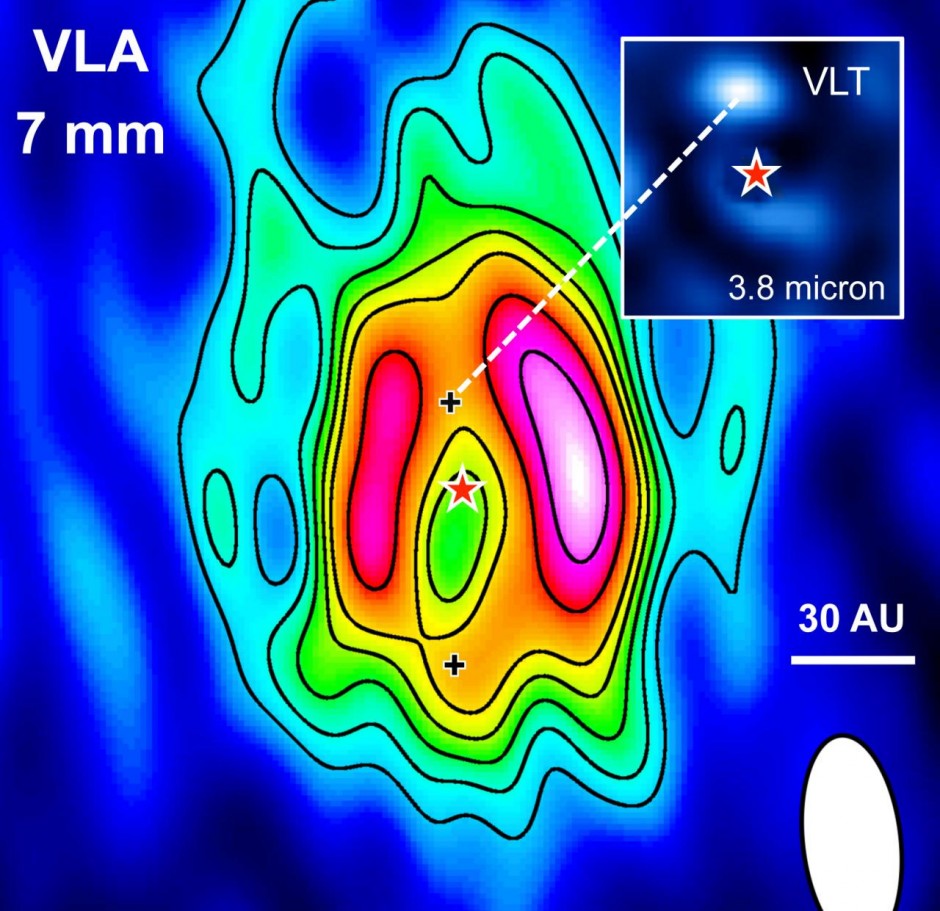Formation of a planetary system

Image at 7 mm wavelength of the dusty disk around the star HD 169142 obtained with the Very Large Array (VLA) at 7 mm wavelength. The positions of the protoplanet candidates are marked with plus signs (+) (Osorio, M. et al. 2014, ApJ, Para 791, L36). The insert in the upper right corner shows, at the same scale, the bright infrared source in the inner disk cavity, as observed with the Very Large Telescope (VLT) at 3.8 micron wavelength (Reggiani et al. 2014, ApJ, 792, L23).
Young star HD169142 displays a disk of gas and dust with two annular gaps possibly due to the formation of planets
Planets are formed from disks of gas and dust that orbit around young stars. Once the “seed” of the planet —composed of a small aggregate of dust— is formed, it will continue to gather material and it will carve out a cavity or gap in the disk along its orbital path. More information can be found here.
Categories: Uncategorized

